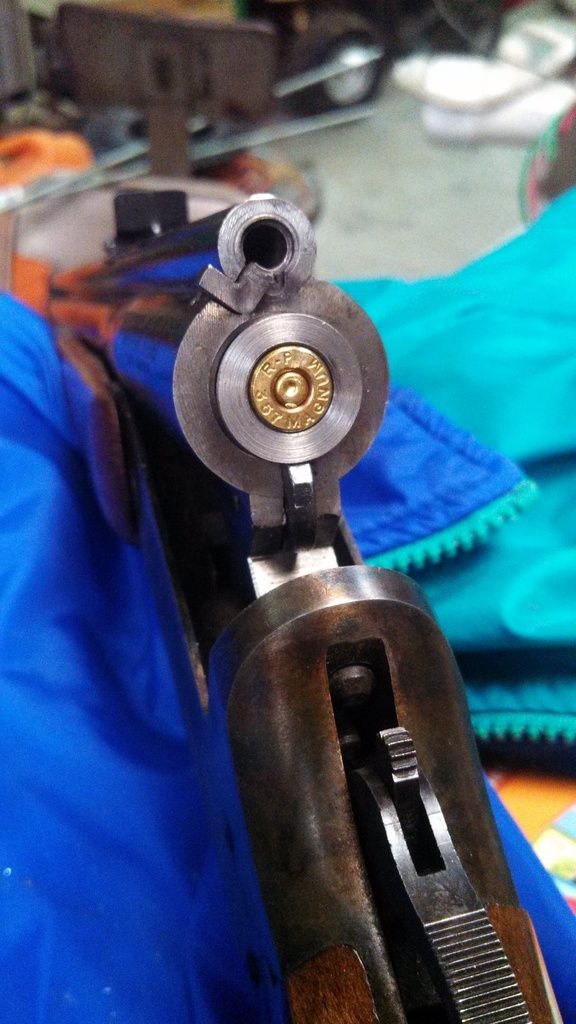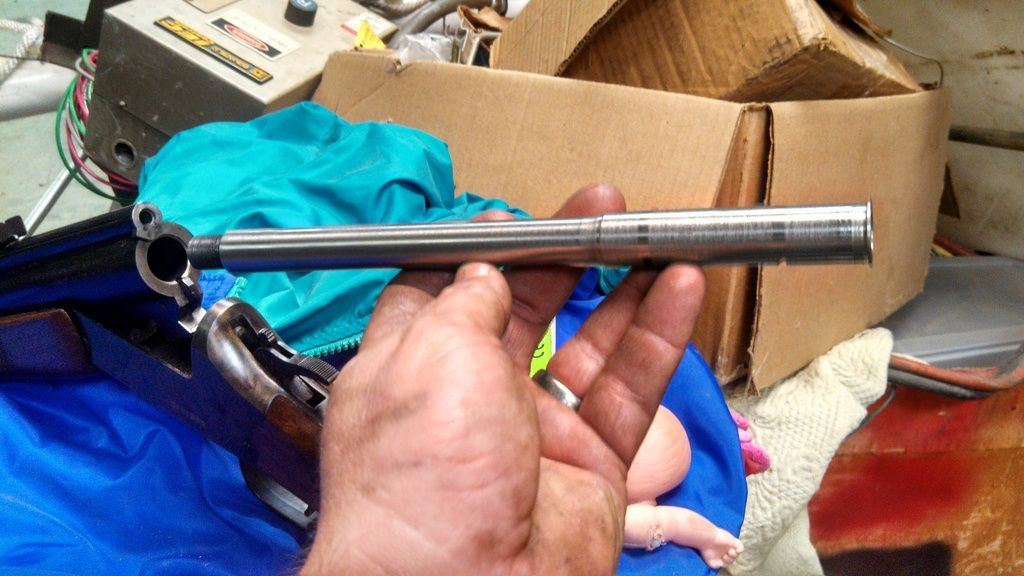Well, the 3500 "brown" load power loads came in today, so I had to a bit of evaluation tonight.
Since I had an NAA .22LR/.22mag revolver that I had bought my wife probably 25-30 years ago and it rarely gets carried anymore, I decided to use it as my first attempt. The C225-55-RF bullet would slide into the .22LR cylinder, but only go as far as the base of the bullet being flush with the base of the cylinder. To seat it deeper, I will need to use mechanical means to push it a bit deeper. So, I decided to just try firing one of the blank rounds in the gun. I loaded a single round into the cylinder and then installed the cylinder in the gun. Installing the cylinder back into the gun seems slightly more difficult and then when I tried to rotate the cylinder, it was somewhat tight during the rotation. I removed the cylinder and I could see where the base of the cartridge was scraping the frame of the gun. So, I put the bullet back in the cylinder and examined it sitting in the cylinder. It seems that it sits slightly higher than a normal .22LR cartridge, so I figured that it is either not seating all the way in the chamber or the rim is just slightly thicker. I will need to check it with my calipers.
Now, if I dropped the C225-55-RF bullet in the .22mag cylinder, it goes nearly all the way to the front of the cylinder. It would take very little pressure to seat it and still stay shy of the front end of the cylinder. I'm not so certain that the .22 power loads will expand enough to seal the .22mag chamber though. Considering how close our hand is to the cylinder on a small revolver like that, I'm hesitant to find out what it feels like to have the hot gases hitting my hand.
So, my next experiment was with a 10" barrel Ruger Mk-II. Because of the small ejection port opening, it's not easy to seat a bullet, so I decided to just test it with feeding the powder load and seeing if it would eject. When I pulled back the bolt and let it go, it picked up a cartridge and chambered it like it should. I then tried to eject the live cartridge and it ejected without a problem. I then reloaded it and went outside and fired it. It fired, but did not eject. As can probably be expected, there was ZERO recoil. The bolt did not lock back, so I figured that it just did not develop the back pressure to cause the bolt to lock back. When I pulled the bolt back manually, the empty brass remained in the chamber. So, I pushed a rod down the end of the barrel and the spent brass came out easily.
Examination of the spent brass showed that the crimped portion expanded to chamber diameter, but a small portion of the botttleneck area between the crimp and the main diameter of the cartridge did not expand as much. There were one split in the case, but it was on one of the crimp lines and only extended to the bottleneck portion that did not expand. It did not extend into the main body of the cartridge. So, I'm thinking that the rest of the cartridge expanded and acted as a seal to the pressure, just like it was supposed to do. I had been concerned that the additional power in one of these loads might cause the bolt to slide back too far and thus need a heavier spring to prevent it from doing damage to the bolt or frame, but at least without a bullet in the chamber, that is not a concern.
If I end up having to use a rod to remove the spent casing each time, that wouldn't be an issue for me. Hell, the muzzle loader folks have to use rods to seat their bullets all the way down the barrel -- having to use one to eject the brass is a lot less effort.
I have a Ruger 10/22, but I'm thinking that the ejection port opening on it would not make it any easier to set a bullet from the breech, so I'll probably avoid testing with that one. I have a Ruger Mini-14 and a .22LR conversion kit for it. I'm thinking that it might be a bit easier to set a bullet from the breach with that one. I'll have to look at the kit a bit to see if it will work.

|
   
   
|


|








 Reply With Quote
Reply With Quote
















